Whyte Avenue, Edmonton’s south-of-the-river main street, has long been a gathering place. As an eclectic shopping destination, a Provincial Heritage District with an impressive collection of historical buildings, the locus of Edmonton’s Fringe Theatre Festival (North America’s largest), home to the venerable Old Strathcona Farmer’s Market, and a number of other smaller events and celebrations throughout the year, it attracts a wide range of people for a wide range of reasons.
But Whyte Avenue is a Jekyll and Hyde street. During the day, the street functions as a true main street for the Strathcona neighbourhood, busy with local workers grabbing a coffee before heading to the office, shoppers perusing the bookstores and boutiques, errand-runners popping into the bank, and exercisers joining their classes at the yoga studios. After work, people heading home, picking up their kids from school, or heading for an after-work bite fill the sidewalks as they wind down from their days. Once the sun dips below the horizon, however, the street starts to take on a different kind of energy. The bars fill up, the average age dips to 20 or so and the blood alcohol level rises. On summer weekends in particular, the police set up shop to moderate the worst excesses of youthful exuberance, a legacy of the infamous 2001 Canada Day riot and the unrestrained excitement during the 2006 Oilers cup run.
After each night of raucous partying, the shops and restaurants open up again the next day and shoppers, diners and families come back to enjoy this truly urban avenue. Almost as if none of the previous night’s activities even happened.
The following is the first of a two-part series on the dual nature of Whyte Avenue by Edmonton photographers Owen Murray and Tom Young. Part 2: Whyte at Night by Tom Young, will be posted on Friday.

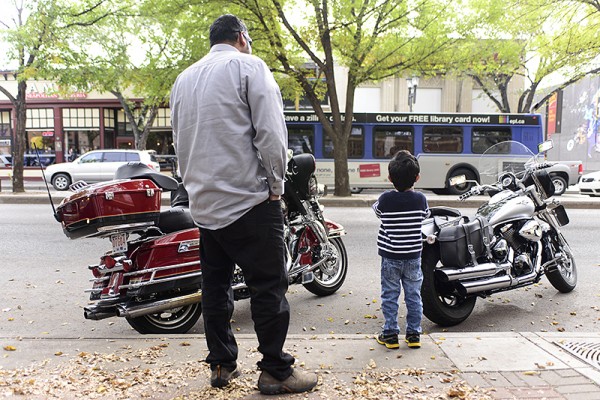
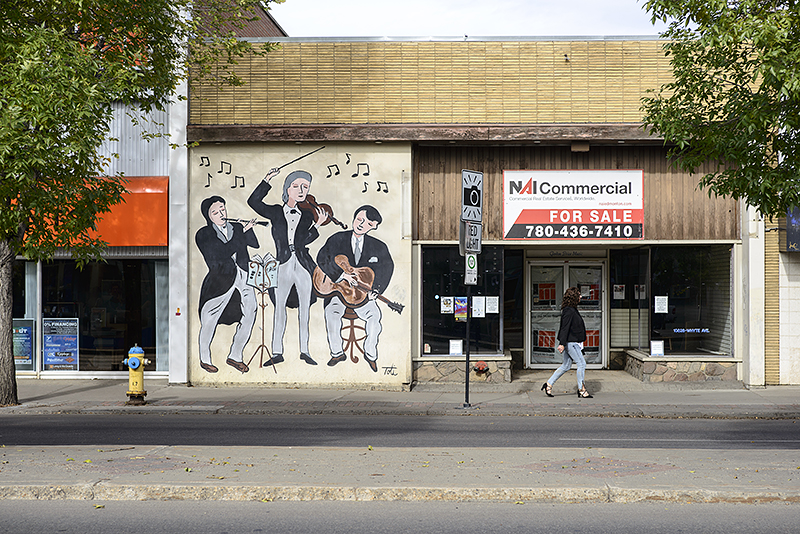
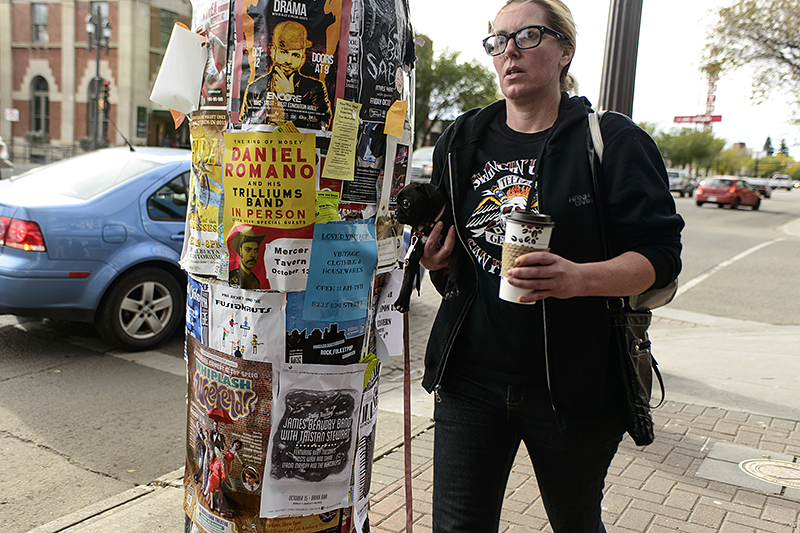
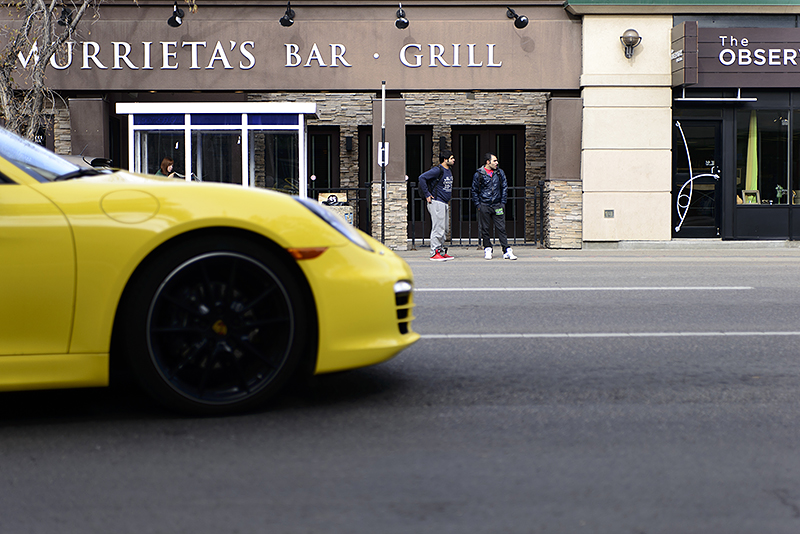
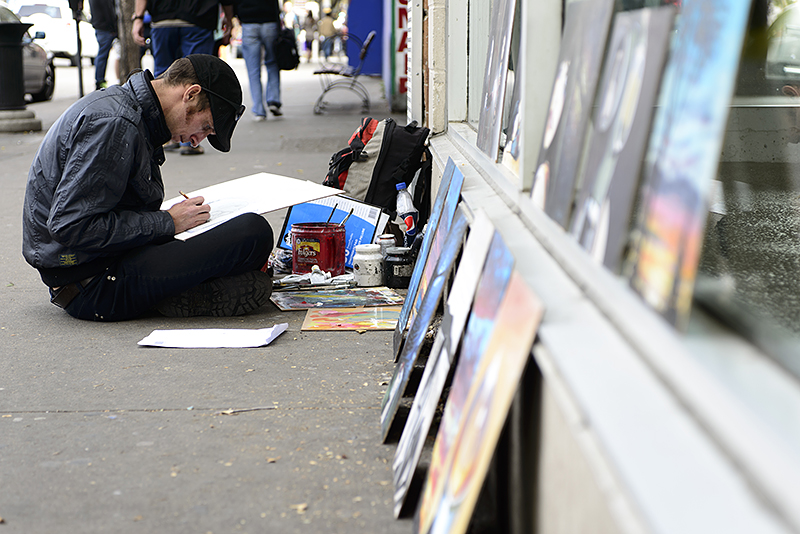

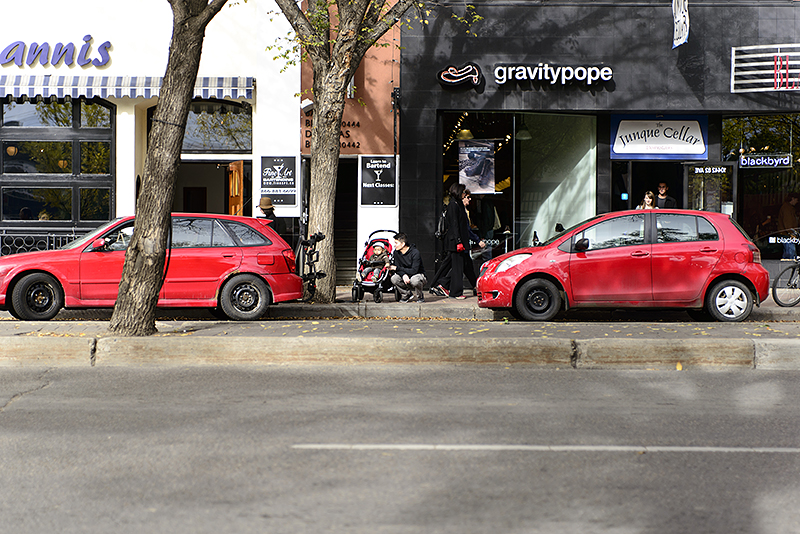
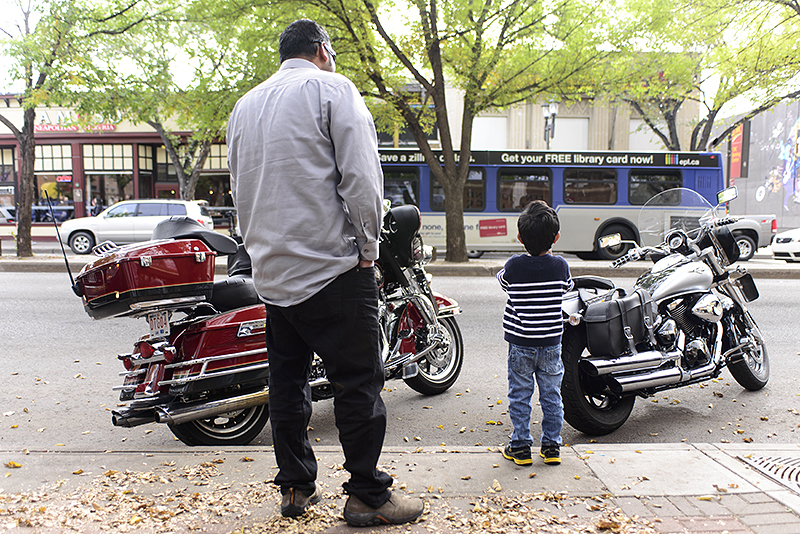
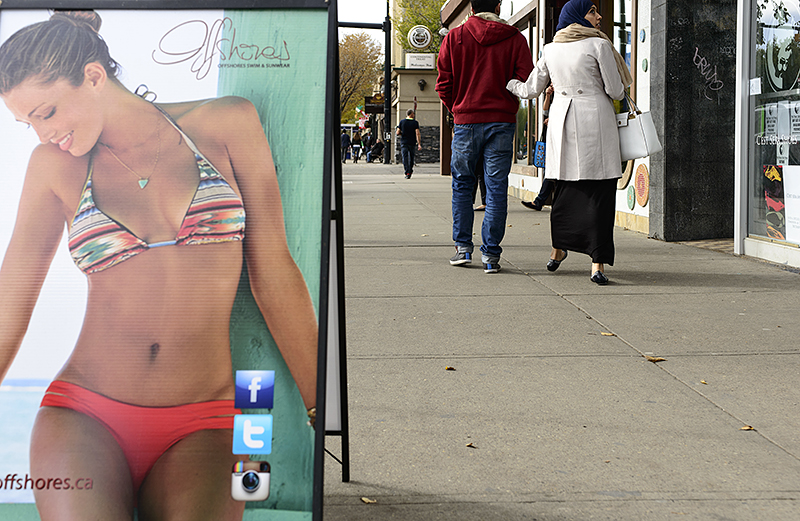


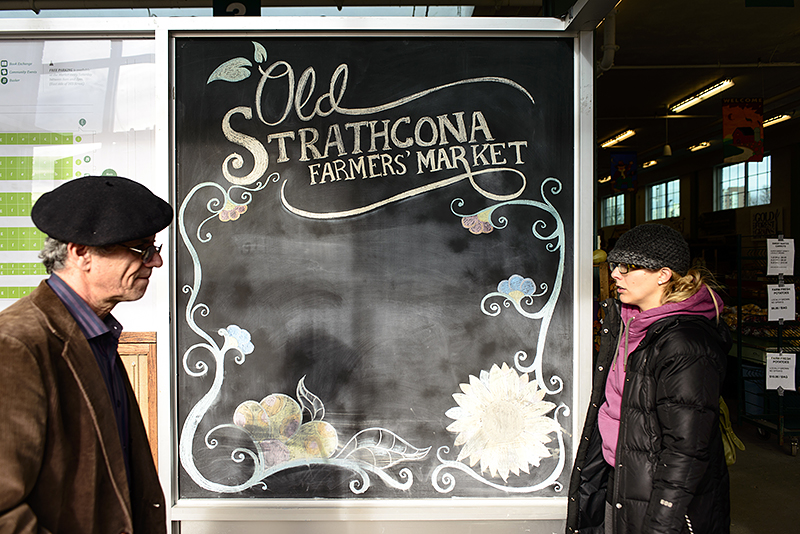
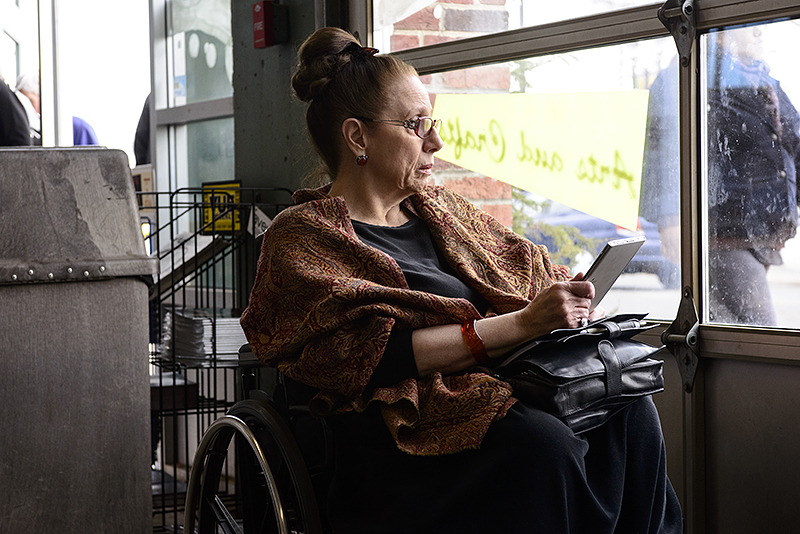
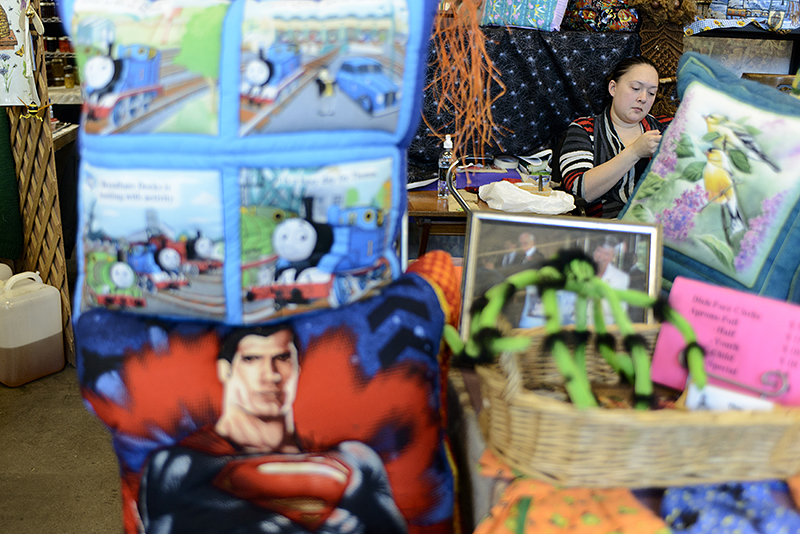
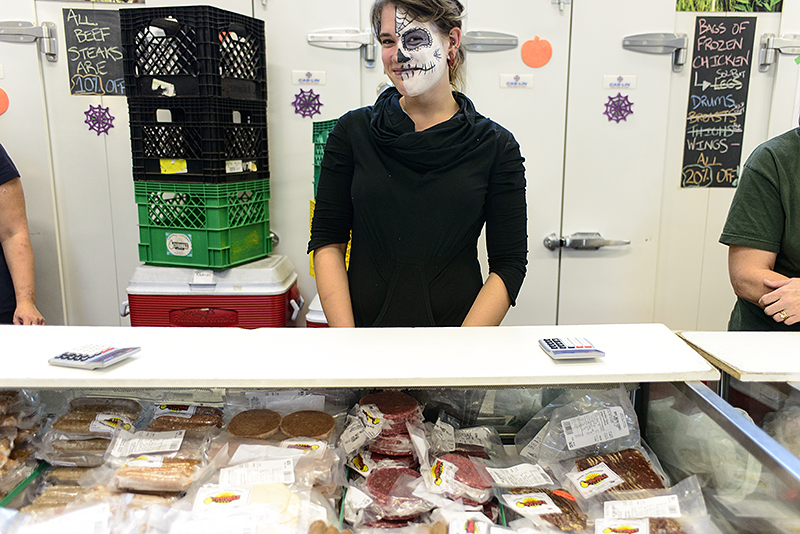

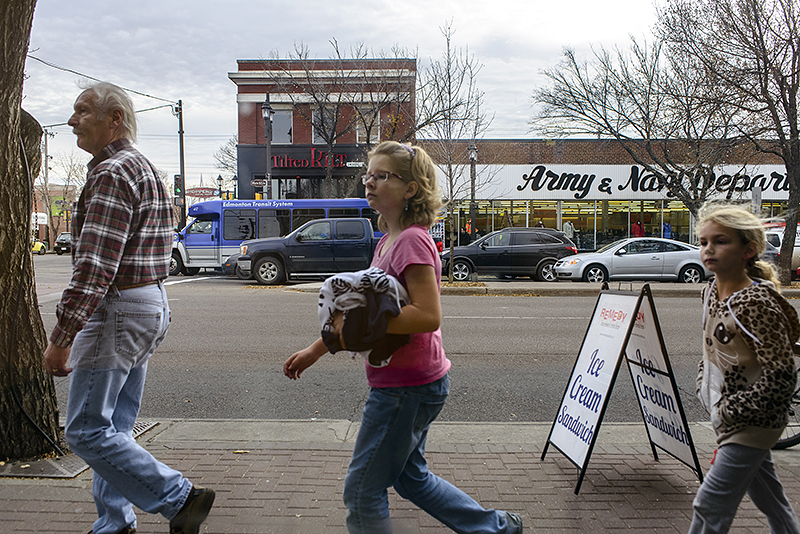
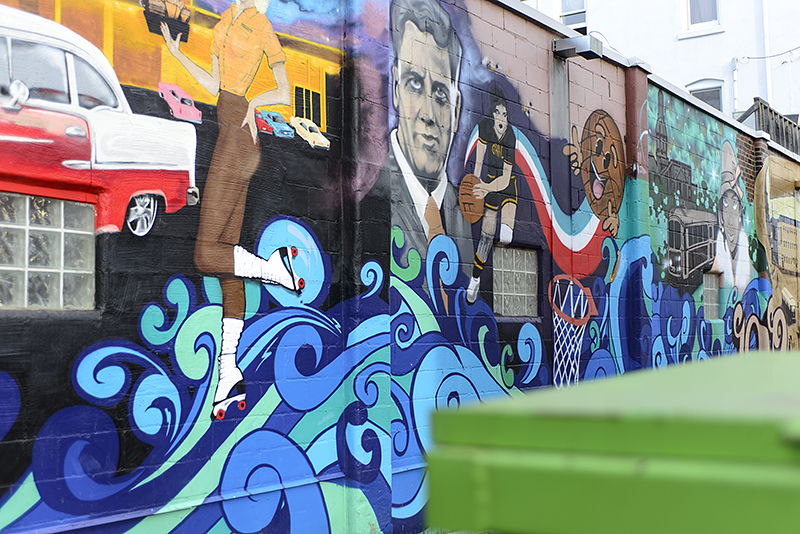
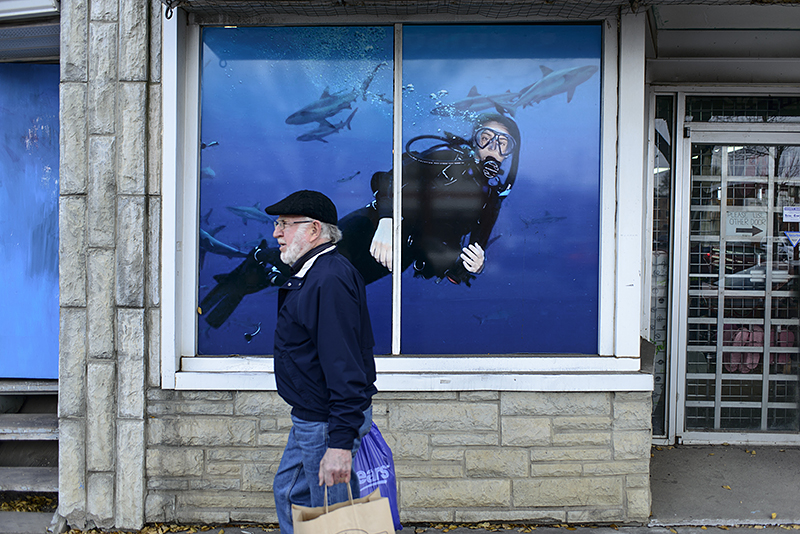
7 comments
So, I guess what makes Whyte Avenue special is that it isn’t.
Sure, that’s one way of saying it. Whyte Ave has very few pretensions; it is what it is – one character during the day, another at night.
I think Whyte Avenue is successful because it offers a layering of different activities, both recreational and functional, throughout the day and year. It is a destination for all sorts of people who live in the area (of which there are many; Strathcona is one of Edmonton’s densest and most diverse neighbourhoods), but also attracts people from all over the city because it is, in Edmonton at least, fairly unique. There are examples of streets like Whyte in cities all over the world, but in North America we spent the last half of the 20th century dismantling many of them, putting in strip malls, parking lots, big box stores, making them less diverse, less multi-layered, less pedestrian-friendly and accessible. I wish Whyte WASN’T special, but the reality is that in Edmonton there aren’t many like it.
Hear, hear. In North America we catered to the car on an almost subconscious level and wound up alienating and dividing communities through the intrinsic nature of said transportation. But that’s starting to change — and there are other parts of YEG coming to take on the multifunctional role that Whyte represents; 104th Street and 124th Street come to mind and it’s only going to get better!
Owen – like what you have portrayed here, but some of the facts are still a little off base. We are definitely two different economies – Day vs Night – but the gap between them is not as vast as you portray. The Night as you have described it is between the hours of 11 pm to 3 am – and many of our entertainment, dining, and yes drinking establishments service a wide demographic after the sun hits the horizon. Once this “perception” is corrected the vibrancy of the area will continue to improve and we will be the walkable, vibrant, and diverse area that people expect, and as you have commented, other areas are trying to reproduce in other parts of the city.
Once we see our streets as public spaces – the perceptions will correct and we can reach our full potential in Old Strathcona and Edmonton over all.
Hi Murray, your comments are probably meant more for me than Owen, as I actually wrote the intro for this piece. (You may have noted it is the same intro as the one on my nighttime companion essay).
You’re right, the core “party period” runs from 11 pm to 3 am. But the shift begins well before that, I think. My intention was not to suggest that as soon as the sun hits the horizon that everyone over 30 vanishes from the street, but rather that there is a shift between the daytime and nighttime economy and crowds which begins at that time. I think this is accurate.
And really, there’s nothing inherently wrong with partying youth. I noted that the riots in 2006 and 2001 represented the “worst excesses”. Perhaps I should have noted more clearly that those were not regular events, but rather were associated with somewhat unusual activities: a cup run and a particular Canada Day gone wrong. And despite the occasional time when things have gotten out of hand, these two characters of the street coexist relatively peacefully. That to me is a sign of a street that successfully serves a wide range of people in a wide range of ways.
Murray, thanks for taking a look and making the time to comment.
I don’t think the issue revolves around correcting, changing or fixing perceptions, as there are as many perceptions out there as there are Edmontonians. The diversity of these perceptions are what colour the Avenue and bring life to it.
I’d be a little hesitant to describe Whyte as having not reached full potential, or of being anything other than what it is. As it stands now, I think Tom’s characterization hits pretty close to the mark — Whyte has two distinct personas that divide along day and night— there’s nothing wrong with this.
As more awareness is brought to the importance of shared, public spaces, I’m sure that Whyte’s persona will change, too — though in which direction, how and when is difficult to know. This awareness would seem to be a constant, core conversation between the generations; the realization of streets as public spaces perhaps even a question of coming of age?
Regardless of expectation, the greatest influence lies in the imagination and vision of engaged citizens and business owners that populate, own and use the area. I’m sure that with their guidance, Whyte will grow and flourish and become even more walkable, vibrant and diverse than it is now.